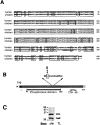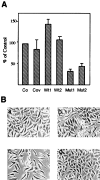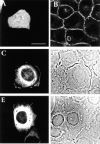The nonreceptor protein tyrosine phosphatase PTP1B binds to the cytoplasmic domain of N-cadherin and regulates the cadherin-actin linkage
- PMID: 9786960
- PMCID: PMC2132848
- DOI: 10.1083/jcb.143.2.523
The nonreceptor protein tyrosine phosphatase PTP1B binds to the cytoplasmic domain of N-cadherin and regulates the cadherin-actin linkage
Abstract
Cadherin-mediated adhesion depends on the association of its cytoplasmic domain with the actin-containing cytoskeleton. This interaction is mediated by a group of cytoplasmic proteins: alpha-and beta- or gamma- catenin. Phosphorylation of beta-catenin on tyrosine residues plays a role in controlling this association and, therefore, cadherin function. Previous work from our laboratory suggested that a nonreceptor protein tyrosine phosphatase, bound to the cytoplasmic domain of N-cadherin, is responsible for removing tyrosine-bound phosphate residues from beta-catenin, thus maintaining the cadherin-actin connection (). Here we report the molecular cloning of the cadherin-associated tyrosine phosphatase and identify it as PTP1B. To definitively establish a causal relationship between the function of cadherin-bound PTP1B and cadherin-mediated adhesion, we tested the effect of expressing a catalytically inactive form of PTP1B in L cells constitutively expressing N-cadherin. We find that expression of the catalytically inactive PTP1B results in reduced cadherin-mediated adhesion. Furthermore, cadherin is uncoupled from its association with actin, and beta-catenin shows increased phosphorylation on tyrosine residues when compared with parental cells or cells transfected with the wild-type PTP1B. Both the transfected wild-type and the mutant PTP1B are found associated with N-cadherin, and recombinant mutant PTP1B binds to N-cadherin in vitro, indicating that the catalytically inactive form acts as a dominant negative, displacing endogenous PTP1B, and rendering cadherin nonfunctional. Our results demonstrate a role for PTP1B in regulating cadherin-mediated cell adhesion.
Figures










References
-
- Bandyopadhyay, D., A. Kusari, K.A. Kenner, F. Liu, J. Chernoff, T.A. Gustafson, and J. Kusari. 1997. Protein-tyrosine phosphatase 1B complexes with the insulin receptor in vivo and is tyrosine-phosphorylated in the presence of insulin. J. Biol. Chem 272:1639–1645. - PubMed
Publication types
MeSH terms
Substances
Associated data
- Actions
LinkOut - more resources
Full Text Sources
Other Literature Sources
Molecular Biology Databases
Research Materials
Miscellaneous

